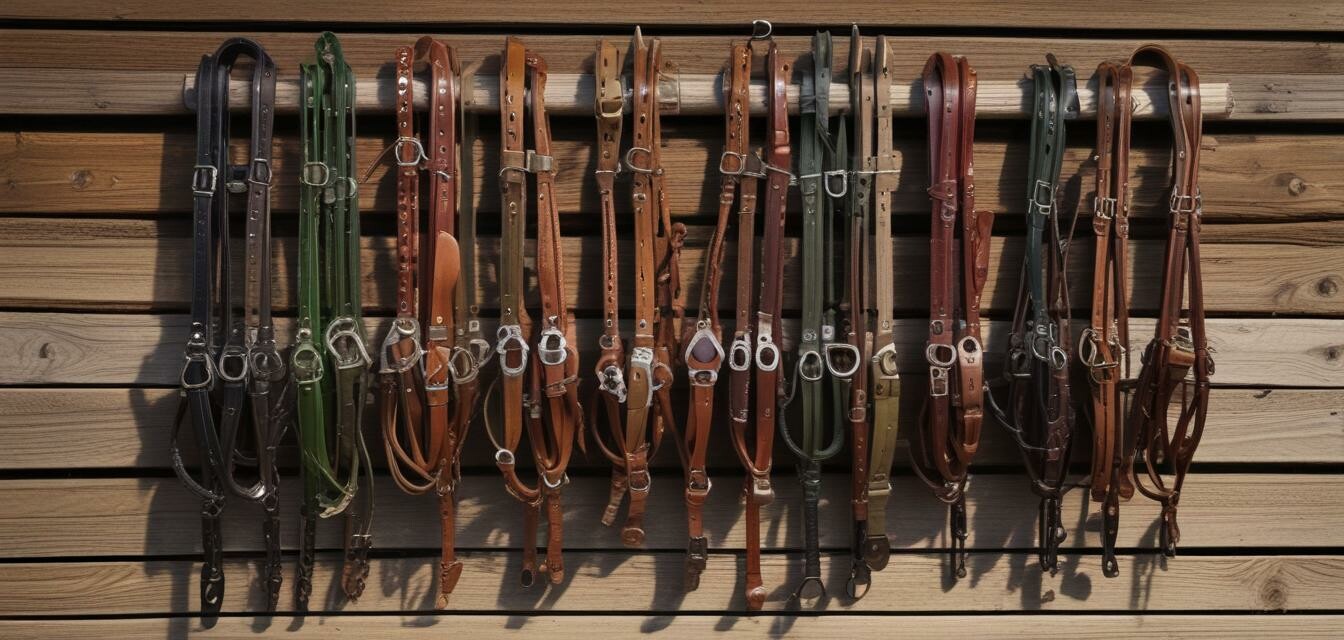
Choosing the Right Horse Bridle
Key Takeaways
- Understand different types of bridles and their purposes.
- Size and fit are crucial for your horse's comfort.
- Materials can affect durability and ease of use.
- Consider your riding style and discipline when selecting a bridle.
- Regular maintenance ensures longevity and performance.
Choosing the right horse bridle is essential for ensuring your horse's comfort, safety, and performance. With various styles, materials, and sizes available, it can be overwhelming to make the right decision. This guide will help you navigate the key considerations when selecting a bridle, ensuring it meets your horse's needs.
Types of Horse Bridles
There are several types of bridles, each suited for different riding styles and purposes. Here’s a breakdown of the most common types:
| Bridle Type | Description | Best For |
|---|---|---|
| Flat Bridle | Standard design with no additional pieces. Versatile and simple. | General riding and training. |
| Double Bridle | Includes two bits for more advanced control. | Dressage and advanced disciplines. |
| Western Bridle | Often has no noseband, suited for western riding styles. | Western disciplines and trail riding. |
| Hackamore | Doesn’t use a bit; relies on nose pressure. | Horses that prefer bitless options. |
Choosing the Right Fit
Correct sizing is crucial for your horse's comfort and safety. Here are a few tips to ensure a proper fit:
- Measure your horse's head: Use a measuring tape to get the length around the muzzle and around the crown.
- Check adjustability: Ensure the bridle has enough holes for adjustments.
- Examine the noseband: It should sit comfortably without pinching or restricting breathing.
- Test the browband: It should be snug but not tight.
Material Matters
The material of a bridle can significantly impact its usability and longevity. Here are the most common materials and their benefits:
| Material | Advantages | Disadvantages |
|---|---|---|
| Leather | Durable, classic look, molds to horse’s head. | Can be expensive and requires maintenance. |
| Nylon | Affordable, easy to clean, available in many colors. | Less durable than leather and can cause chafing. |
| Webbing | Lightweight, cheap, resistant to wear. | Less traditional look; not as much give. |
Your Riding Style and Discipline
Your personal riding style can greatly influence what type of bridle you should choose. For instance, if you primarily ride in English disciplines, a double bridle may be ideal. Conversely, relaxed trail riding might be best served with a western bridle. To read more about suitable choice for different riding styles, visit our Rider Tips and Advice section.
Maintenance Tips for Longevity
Once you select a bridle, proper maintenance can extend its life:
Tips for maintaining your bridle
- Clean leather bridles regularly with appropriate cleaner and conditioner.
- Check for wear and tear to prevent accidents.
- Store it in a cool, dry place out of direct sunlight.
Conclusion
Choosing the right horse bridle involves understanding your horse's needs and your riding style. Always prioritize comfort and functionality. With the information provided in this guide, you are well-equipped to make an informed choice. Explore more gear options in our Equestrian Gear section, and check our Horse Care Products for complementary items.
Pros
- Improves communication between horse and rider.
- Enhances comfort and performance for the horse.
- Available in various styles to suit different disciplines.
Cons
- Incorrect fit can cause discomfort and performance issues.
- Higher-quality options can be expensive.
